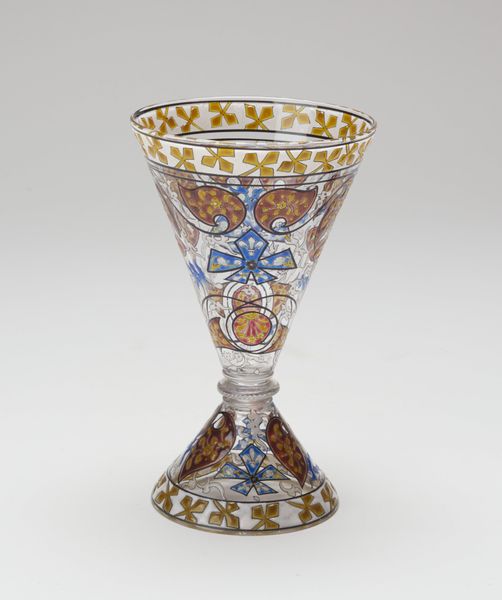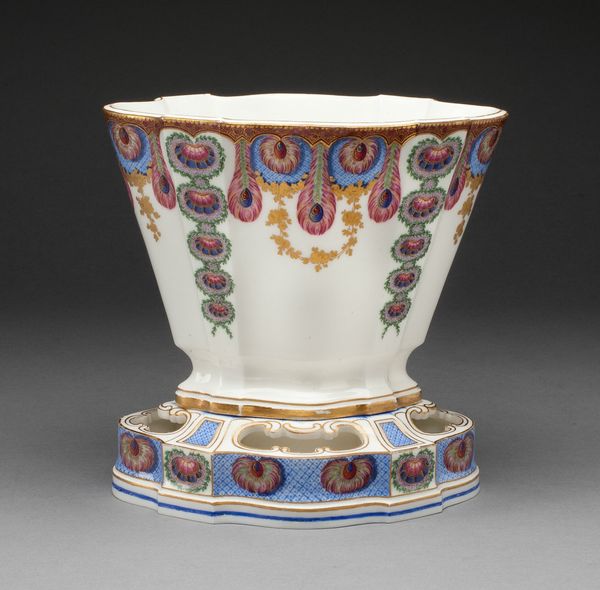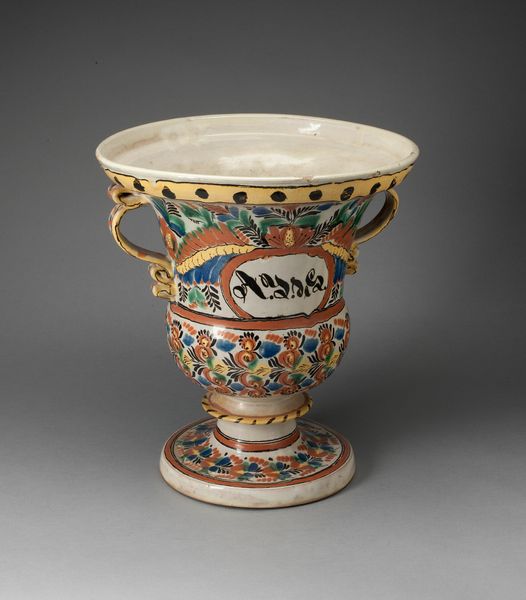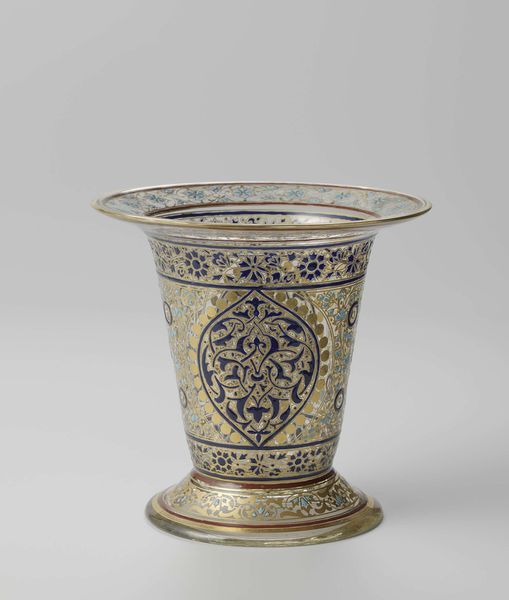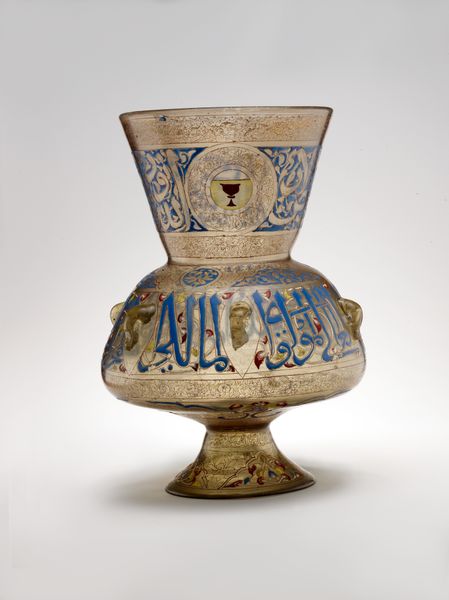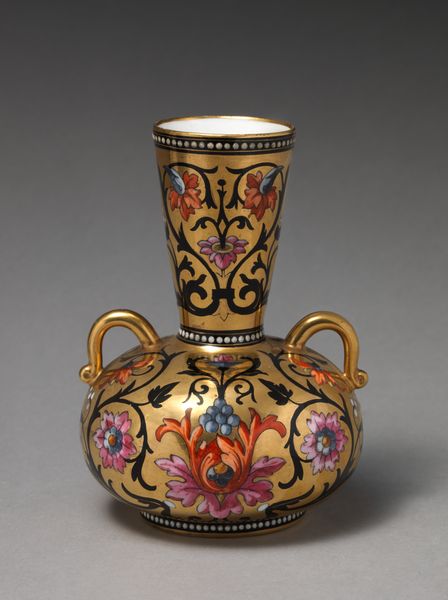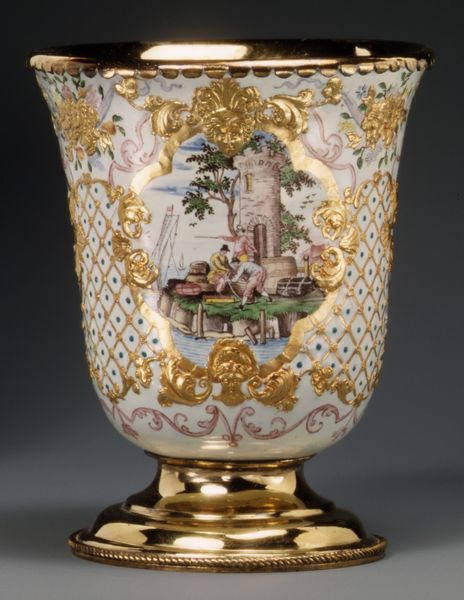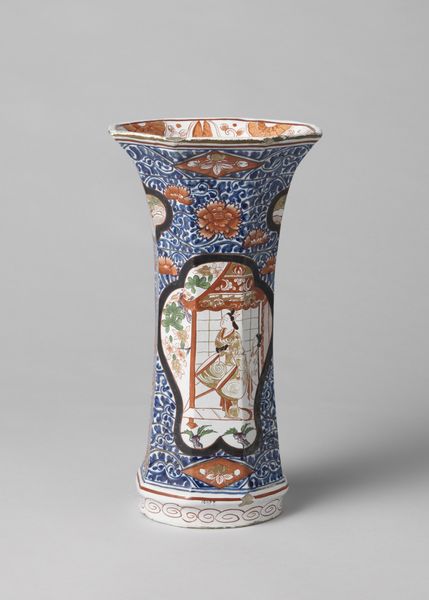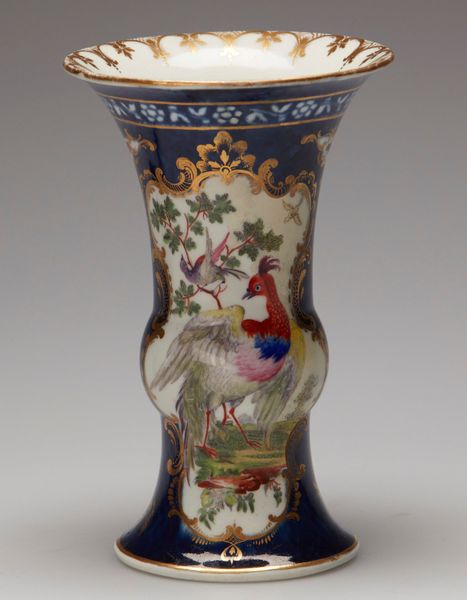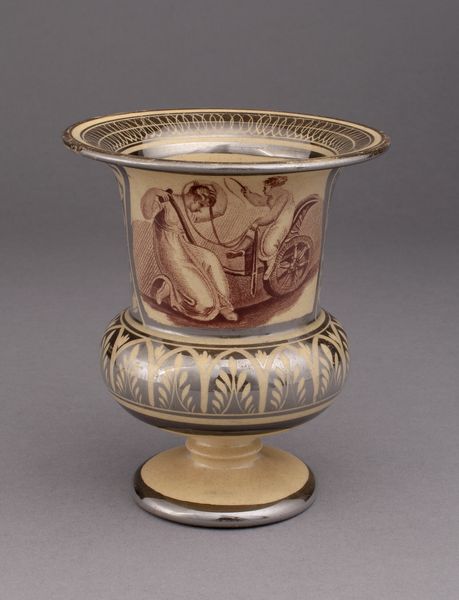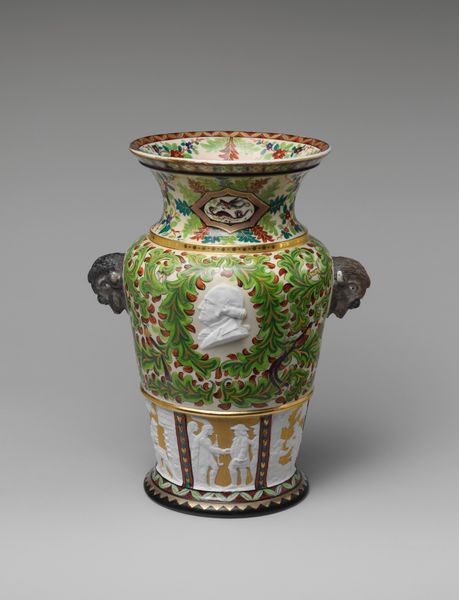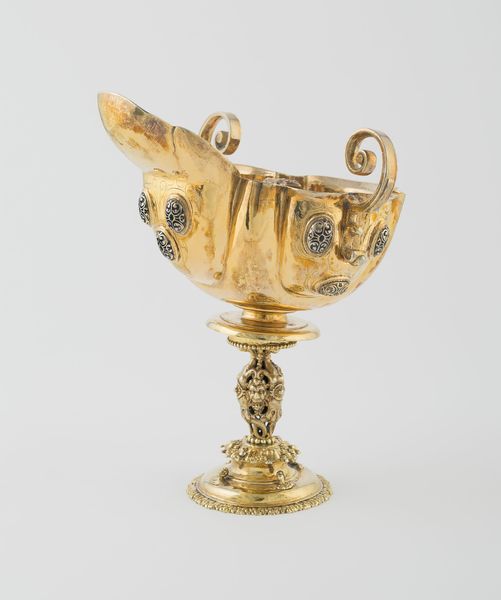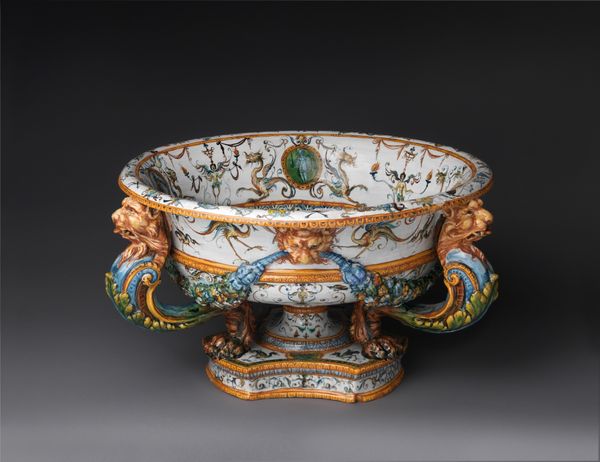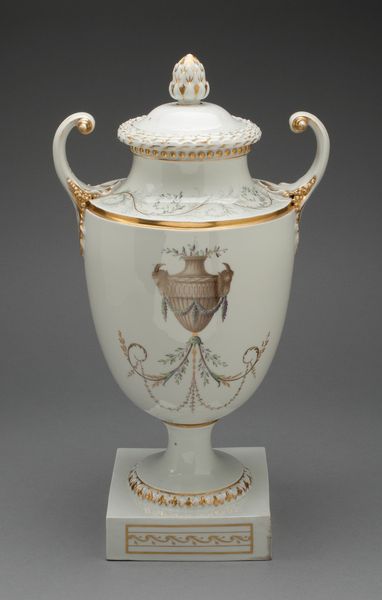
ceramic, glass
#
medieval
#
asian-art
#
ceramic
#
glass
#
ceramic
#
islamic-art
#
decorative-art
#
watercolor
Dimensions: 28.2 × 18.1 × 18.1 cm (11 1/16 × 7 1/8 × 7 1/8 in.)
Copyright: Public Domain
Editor: Here we have a glass lamp, dating back to around the 14th century. It's currently held at the Art Institute of Chicago and, wow, the ornamentation is intricate, isn't it? All those curves and little flecks of color give the glass a remarkable depth. What strikes you most about the lamp as a formal object? Curator: The defining features, to my eye, reside in the piece’s complex articulation of form and surface. The symmetry, first, immediately establishes a sense of balance. Note the swelling, globular base supporting the flaring, funnel-shaped upper portion. Do you see how this echo creates a harmonious, if elaborate, profile? Editor: Yes, definitely! The echoed shapes feel very deliberate, as do the bands of decoration, but can you expand on that? Curator: The decorative bands are critical. Enameling and gilding segment the lamp, reinforcing its structure. The inscriptions, the vegetal motifs, and the medallions, they all contribute to a layered visual experience, no? Consider how light would interact with this surface; how the colored enamels would catch and reflect the illumination. This dynamic is crucial to understanding its aesthetic impact. The interplay of texture, color, and line results in a complex optical display that surpasses its functional purpose. Editor: I hadn't really considered how the light would transform it! Seeing it just as an object almost flattens it. Now it seems so much richer, somehow, both materially and structurally. Curator: Precisely! By concentrating on form, we gain a deeper appreciation for its intrinsic artistic qualities. Editor: Thanks, I never would have noticed those details without your explanation!
Comments
No comments
Be the first to comment and join the conversation on the ultimate creative platform.
